HPE MSA 2052 Storage review
HPE’s Gen5 MSA 2052 doubles storage performance for SMBs at no extra cost


The MSA 2052 is a cinch to deploy and delivers excellent performance - a great choice for SMBs that want automated data tiering at a price they can afford
-
+
Excellent value; Simple deployment; Real-time data tiering; Great IP SAN performance; FC/IP SAN converged data ports
-
-
Still not supported by HPE OneView

HPE's MSA arrays are very popular with SMBs as they offer a great range of storage virtualisation features at unbeatable prices. The latest Gen5 MSA 2050/2052 appliances look like even better value, offering a doubling in performance for the same price.
Along with an updated Broadwell CPU, the new controllers are endowed with twice as much cache memory. Each one has 8GB of cache and employs a super-capacitor and CompactFlash card to protect its contents in the event of a power failure.
Connection options abound as the converged controllers on the SAN models each have four SFP+ ports grouped into two pairs. Each group supports 8/16Gbps Fibre Channel or 10GbE iSCSI. Simply install the desired transceivers to set their personality - remembering that the two controllers must match.
HPE also offers a 4-port 12Gbps SAS3 controller model for direct attached storage. You can have 12 LFF or 24 SFF hot-swap drive bays and all models support SAS3, Midline SAS and SSDs while the 2050 can also handle self-encrypting drives.
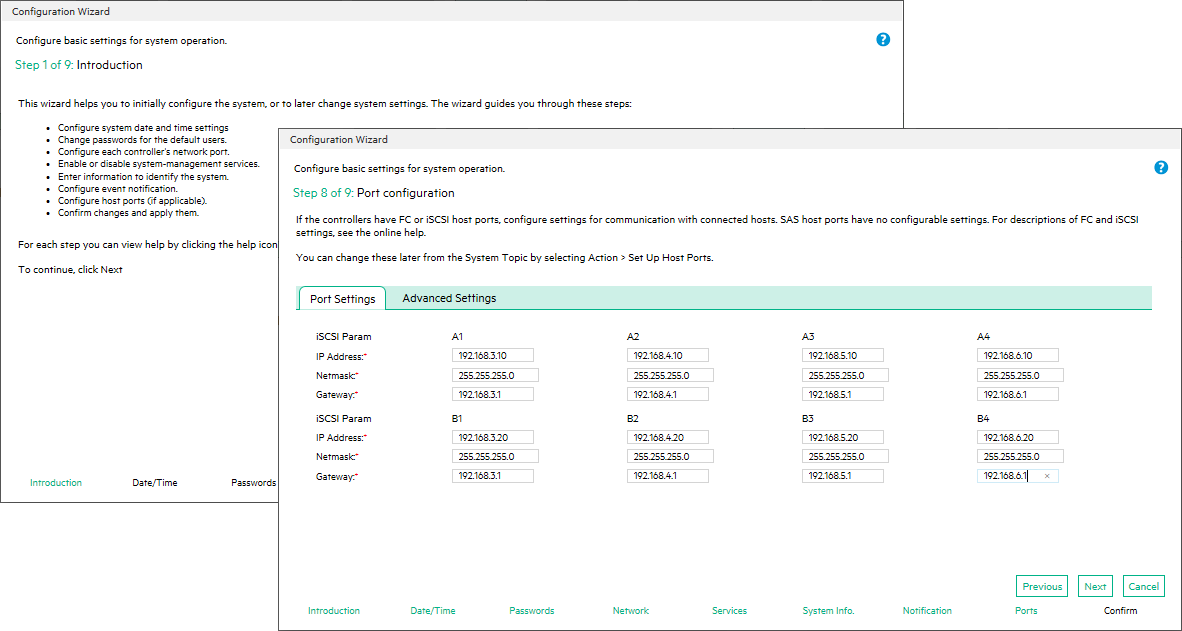
Storage virtualization features
Standard software features across both the 2050 and 2052 models include thin provisioning, snapshots, volume copies and SSD read caching. The stand-out feature is HPE's automated data tiering, which employs a performance tier comprising SSDs that stores hot data and delivers a big performance boost.
This is optional on the 2050 while the 2052 includes HPE's MSA Advanced Data Services Suite, which increases the number of snapshots and activates the performance tier. Standard and archive tiers are included with all models, where data is initially held on SAS drives and moved to lower-cost Midline SAS drives as it gets cold.
The appliances analyse data usage in real-time with 4MB page moves occurring every 5-10 seconds. This allows them to respond quickly to changes in I/O patterns making them a far better choice for changing or unpredictable workloads than many competing SMB arrays that only use daily I/O batch processing.
Sign up today and you will receive a free copy of our Future Focus 2025 report - the leading guidance on AI, cybersecurity and other IT challenges as per 700+ senior executives
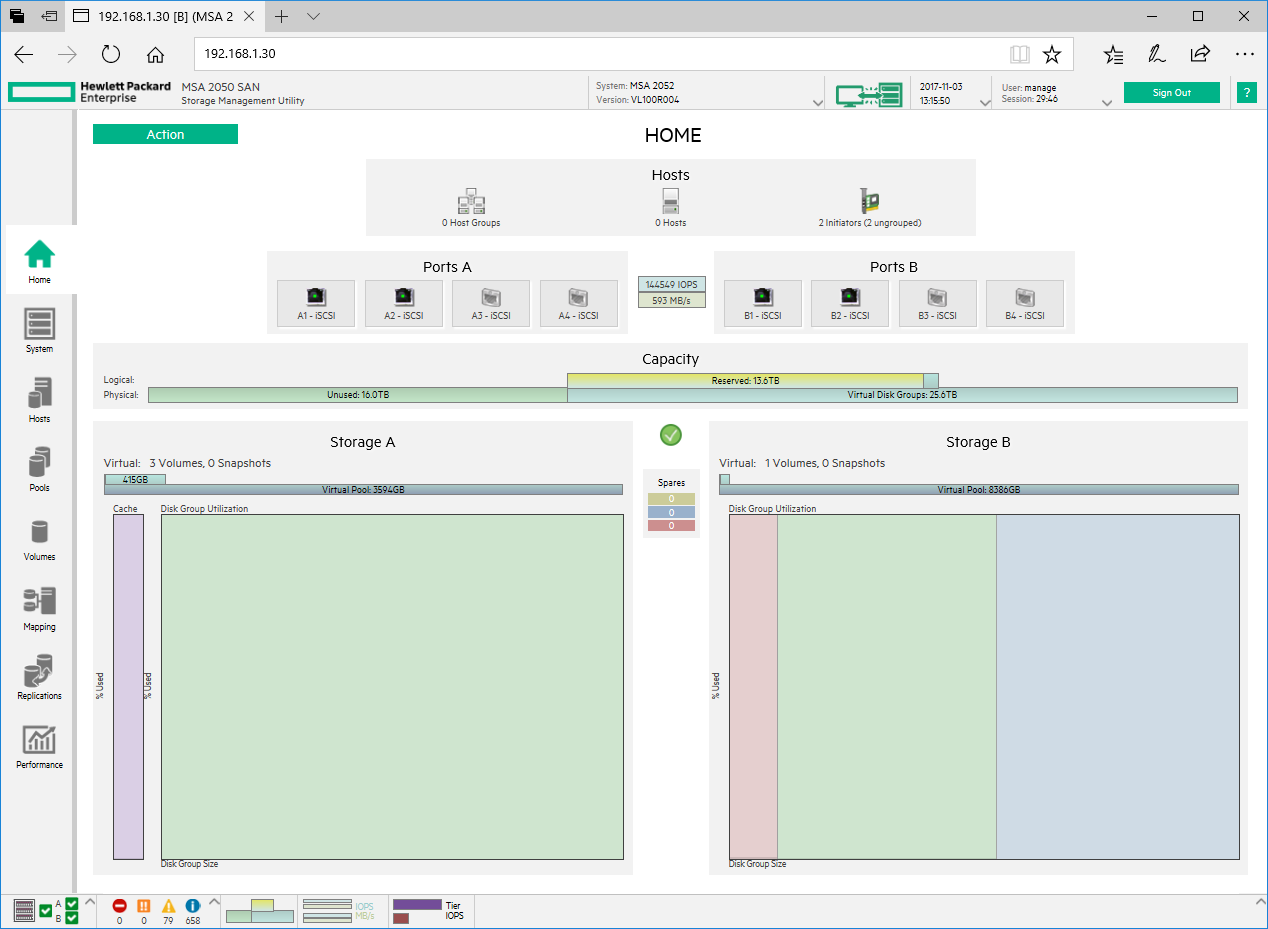
Deployment
You don't need to be a storage guru to deploy the MSA 2052, as its slick SMU v3 web console kicks off a nine-step quick-start wizard to help configure management access, system settings and data port assignments. Our review system was supplied with a full house of 10GbE SFP+ iSCSI transceivers so we just had to assign static IP addresses to each one.
Storage is just as easy to provision as the appliance supports two pools assigned to each controller. Pools contain multiple disk groups, which are created by selecting disk types or SSDs, RAID levels and the controller they should be assigned to.
There's nothing else to do; the appliance automatically places SSDs in the performance tier, SAS drives in the standard tier and Midline SAS drives in the archive tier. If a pool isn't using a performance tier, you can create SSDs read caches if you wish.
To create virtual volumes, we simply chose a name and a size, the number of volumes we wanted and assigned it to a controller to determine which pool it would go in. You can leave the appliance to manage all data movement or select a tier affinity to force it to use the performance or archive tiers.
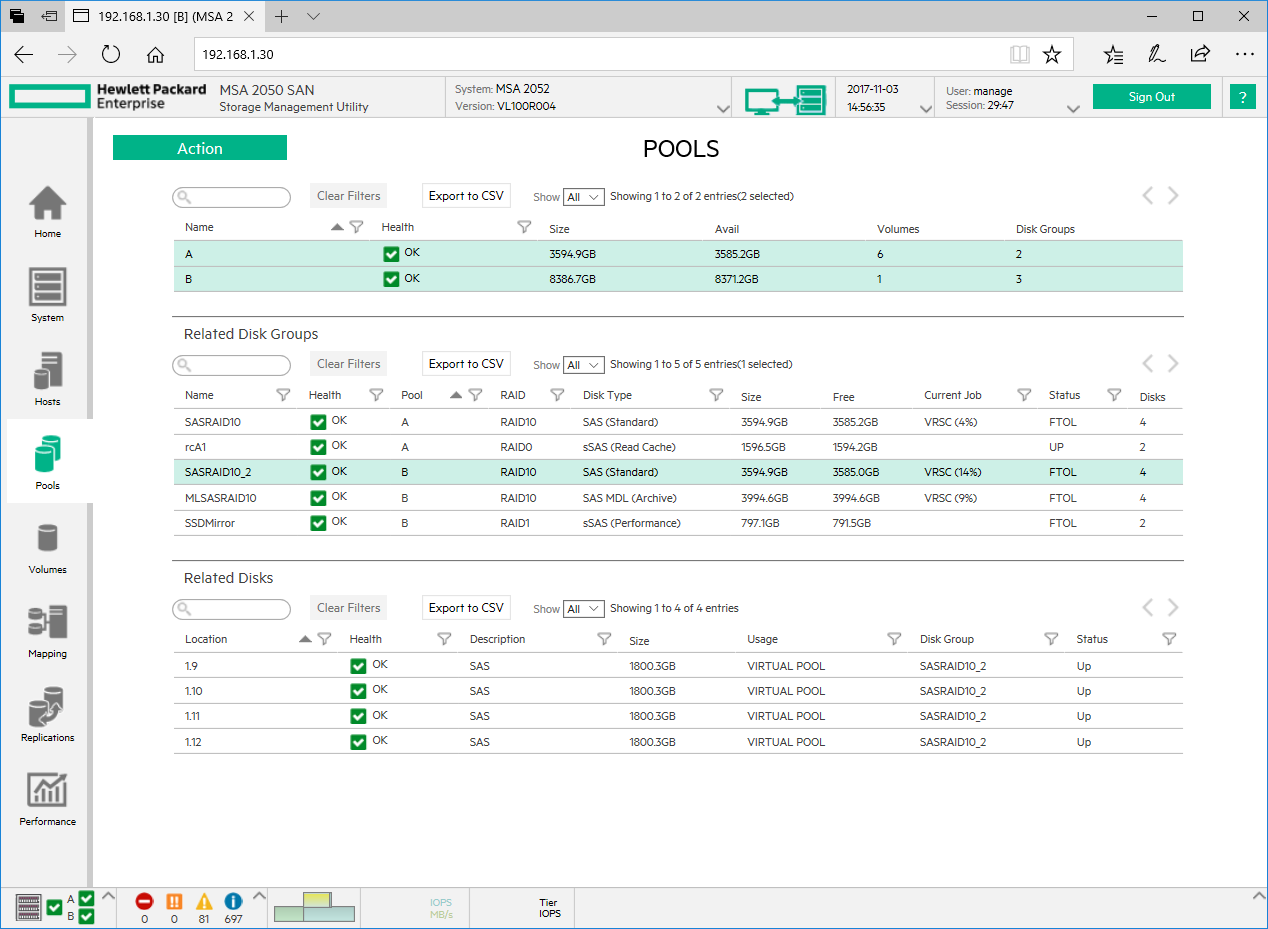
Snapshots and recovery
Previously, the SMU console only supported manual snapshots of virtual volumes but this has been updated to include a scheduler. You can still create on-demand snapshots but the console now allows you to schedule them to repeat as often as every minute, add a daily time window and decide to retain up to sixteen snapshots.
Snapshots are very versatile as they don't require a dedicated pool and you can take child snapshots (snapshots of snapshots). You can reset snapshots so they contain the latest data and map them as new volumes whenever you want.
Recovering data from a snapshot is a swift three-click manoeuver. We tested this by deleting some data from a virtual volume, selected the Rollback option, chose a snapshot, unmounted the volume from connected hosts and had the data restored in less than 10 seconds.
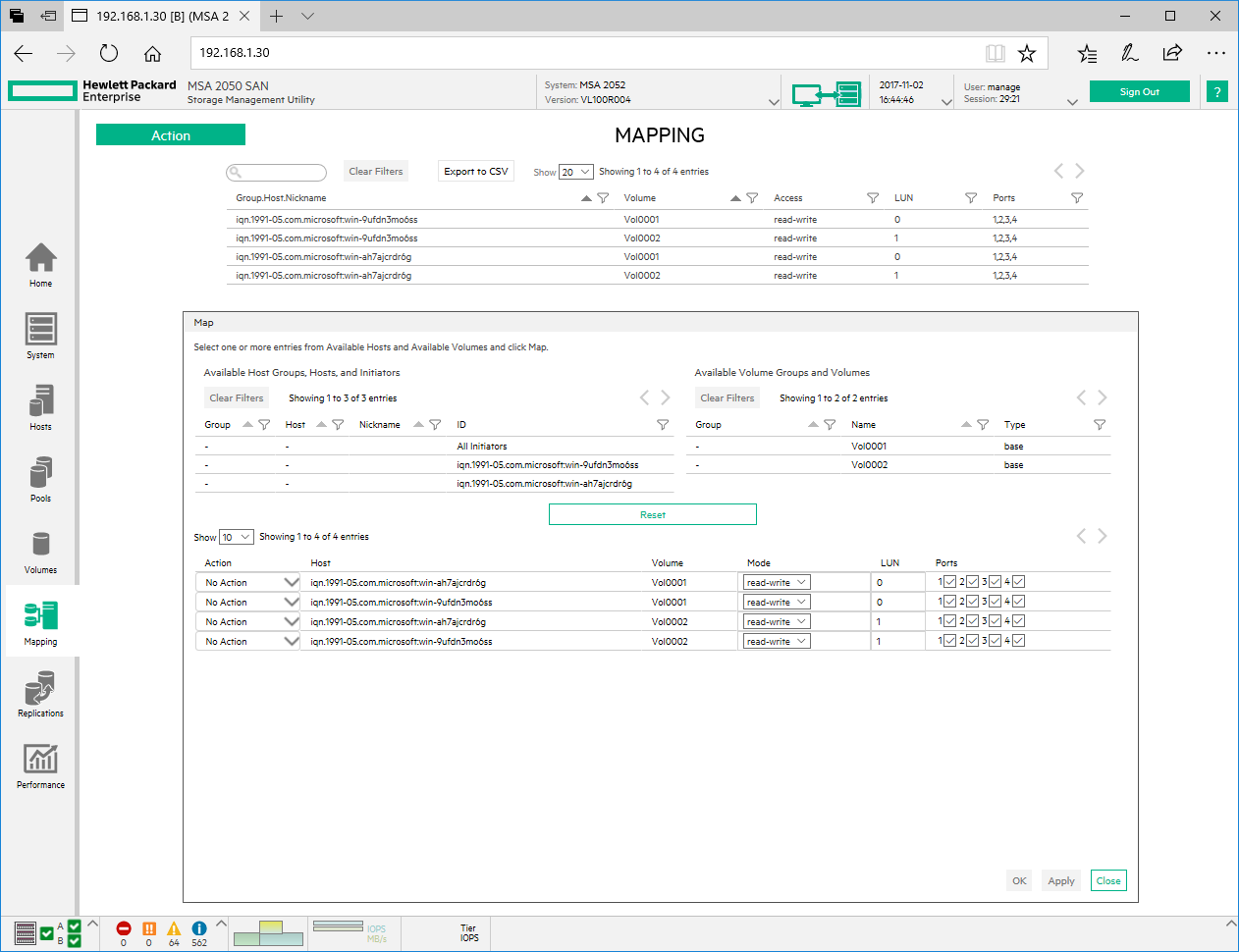
Performance
For testing, we used two Windows Server 2016 hosts both equipped with dual-port 10GbE SFP+ adapters. One was connected to two ports on Controller A and the other to Controller B to allow us to create load-balanced MPIO links.
HPE supplied our test system with four SSDs, eight SAS drives and twelve Midline SAS drives. We created two pools each with three tiers and mapped dedicated virtual volumes to each host.
IP SAN performance is excellent, with Iometer running on both servers returning cumulative sequential read and write speeds of 28Gbits/sec and 20.5Gbits/sec. Random performance is also good, with Iometer recording cumulative read and write rates of 26.1Gbits/sec and 13.5Gbits/sec.
I/O throughput is on the money too, as we recorded total sequential read and write rates of 151,000 IOPS and 67,000 IOPS. For random operations, we saw total read and write rates of 116,000 IOPS and 64,000 IOPS.
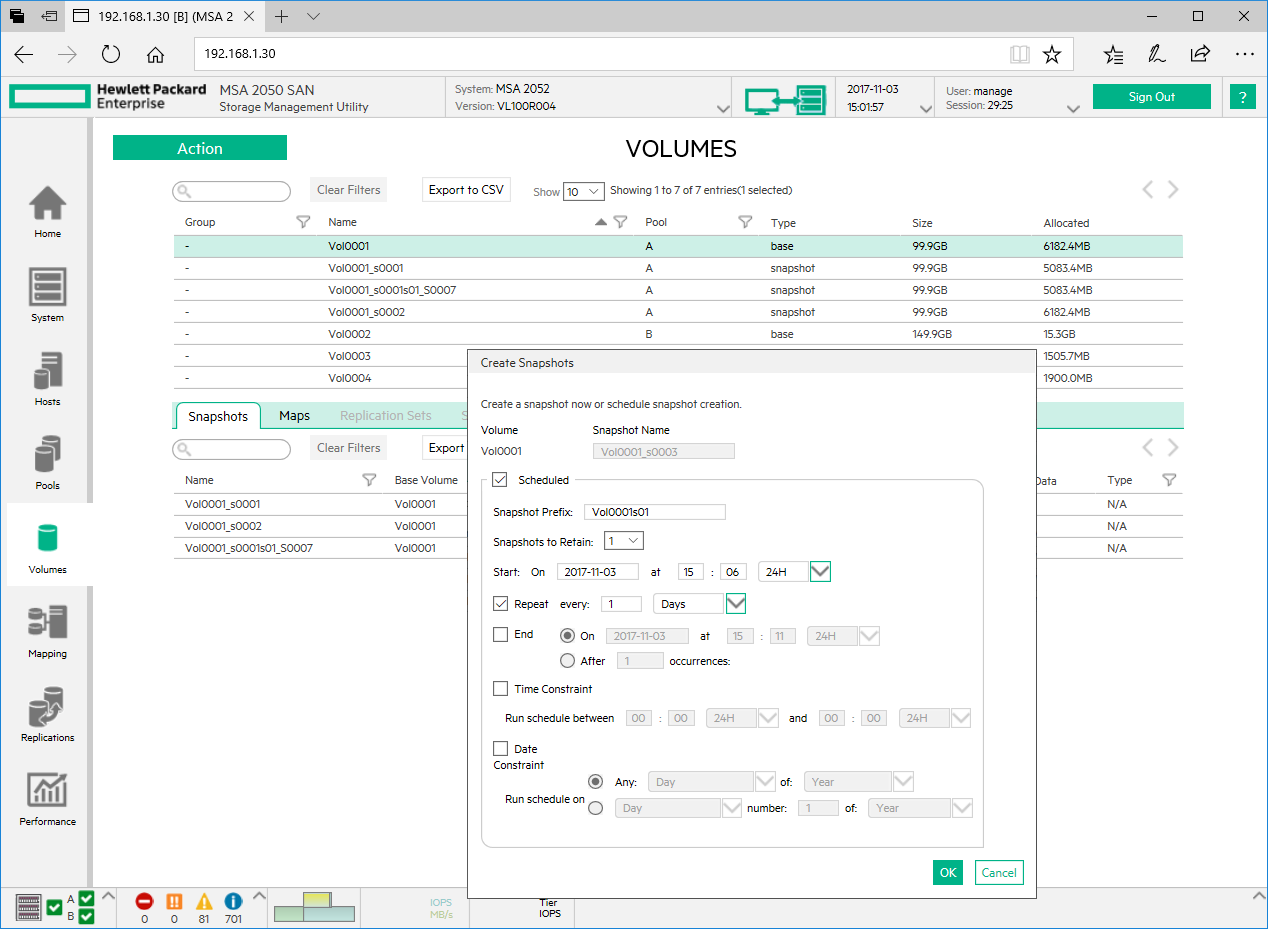
Verdict
SMBs that want a top performing storage array at a sensible price won't find a better solution that the new MSA 2050/2052 appliances. The price we've shown is for the 2052 SFF SAN model Q1J03A which includes a pair of 800GB mixed-use SSDs to get you started and with all data tiering features enabled as well, it looks excellent value.
Verdict
The MSA 2052 is a cinch to deploy and delivers excellent performance - a great choice for SMBs that want automated data tiering at a price they can afford
Chassis: 2U rack
Storage: 12 x LFF or 24 x SFF hot-swap drive bays
Drives included: 2 x 800GB mixed-use SAS SSDs
Power: 2 x 570W hot-plug PSUs
Two controllers each with the following:
Memory: 8GB cache with super-capacitor and CompactFlash card
RAID support: RAID1, 10, 5, 6
Data ports: 4 x SFP+ supporting 8/16Gbps FC or 1/10GbE iSCSI
Management: 10/100 Ethernet
Expansion: 6Gbps SAS port (max 96 LFF/192 SFF disks)
Other ports: Mini-USB CLI port
Volume Copies/Snapshots: 128/512
Software: HPE MSA Advanced Data Services Suite
Management: Web browser
Warranty: 3 years parts only NBD
Dave is an IT consultant and freelance journalist specialising in hands-on reviews of computer networking products covering all market sectors from small businesses to enterprises. Founder of Binary Testing Ltd – the UK’s premier independent network testing laboratory - Dave has over 45 years of experience in the IT industry.
Dave has produced many thousands of in-depth business networking product reviews from his lab which have been reproduced globally. Writing for ITPro and its sister title, PC Pro, he covers all areas of business IT infrastructure, including servers, storage, network security, data protection, cloud, infrastructure and services.
-
 Google is scrapping its dark web report feature — here's everything you need to know and some alternative options
Google is scrapping its dark web report feature — here's everything you need to know and some alternative optionsNews Google said while the dark web report feature offered “general information”, the tool didn’t provide “helpful next steps” for users potentially impacted by a breach.
By Emma Woollacott Published
-
 AI doesn’t mean your developers are obsolete — if anything you’re probably going to need bigger teams
AI doesn’t mean your developers are obsolete — if anything you’re probably going to need bigger teamsAnalysis Software developers may be forgiven for worrying about their jobs in 2025, but the end result of AI adoption will probably be larger teams, not an onslaught of job cuts.
By Ross Kelly Published
-
 JetBrains is mothballing its Fleet IDE service — here’s what developers need to know
JetBrains is mothballing its Fleet IDE service — here’s what developers need to knowNews The Fleet IDE platform will be discontinued later this month and updates will stop
By Ross Kelly Published
